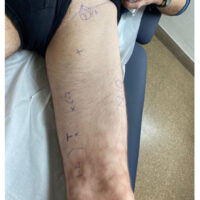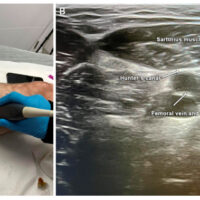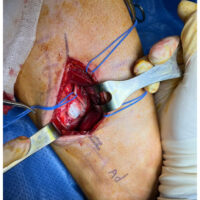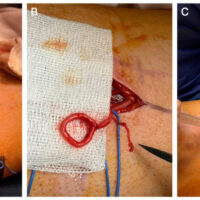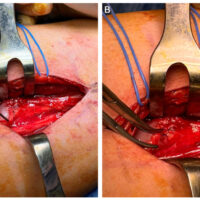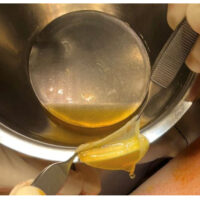- Auteur:
- Eduardo Anitua
- Fahandezh-Saddi Díaz H
- Ríos Luna A
- Villanueva Martínez M
- Cantero Yubero ME
- Prado R
- Padilla S
Surgical Treatment of Saphenous Nerve Injury Assisted by Plasma Rich in Growth Factors (PRGF): Lessons from a Case Report
Abstract
The infrapatellar branch of the saphenous nerve (SN) is a widely described anatomic and functional structure; however, its relevance in daily clinical practice is underestimated. All surgical procedures performed on the anteromedial aspect of the knee are associated with a risk of iatrogenic injury to this nerve, including knee arthroscopy, knee arthroplasty, tibial nailing, etc. We present the case of a saphenous nerve neuroma after treatment with radiofrequency thermal ablation due to a knee pain problem. After conducting an anaesthetic suppression test, we decided to perform a denervation of the medial saphenous nerve in Hunter’s canal. We performed surgery on the anteromedial aspect of the knee. The distal end of the medial SN was coagulated with a bipolar scalpel. The proximal end of the nerve was released proximally, and a termino-lateral suture was made at the free end of the nerve after creating an epineural window to inhibit its growth. A double crush was produced proximally to the suture site to create a grade II-III axonal injury. Autologous plasma rich in growth factors (PRGF) was used to reduce potential post-surgical adhesions and to stimulate regeneration of the surgical lesions. One year after surgery, the patient was living a completely normal life.
Keywords: PRGF; pain; platelet-rich plasma; saphenous nerve; surgery.

 Español
Español
 English
English
 Deutsch
Deutsch
 Italiano
Italiano
 Português
Português

